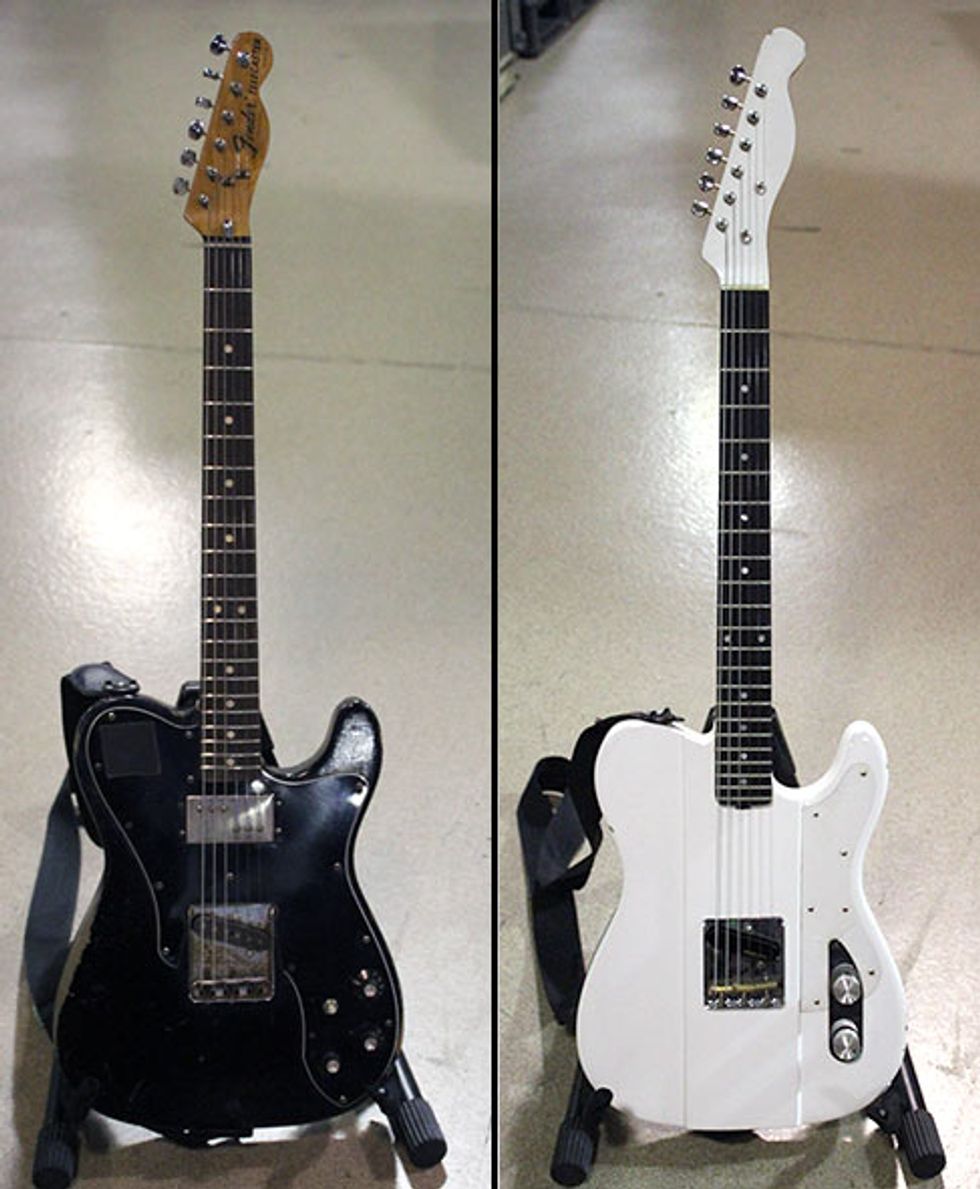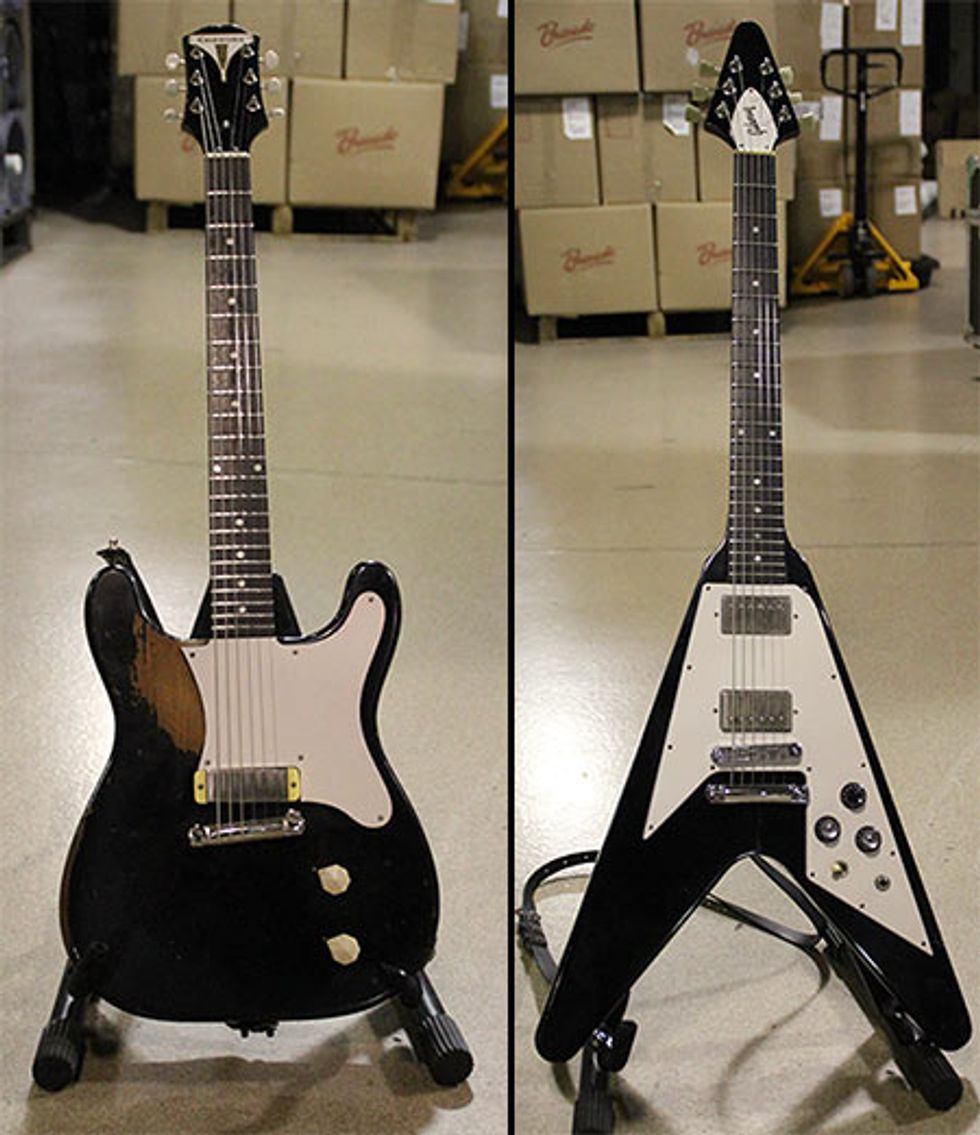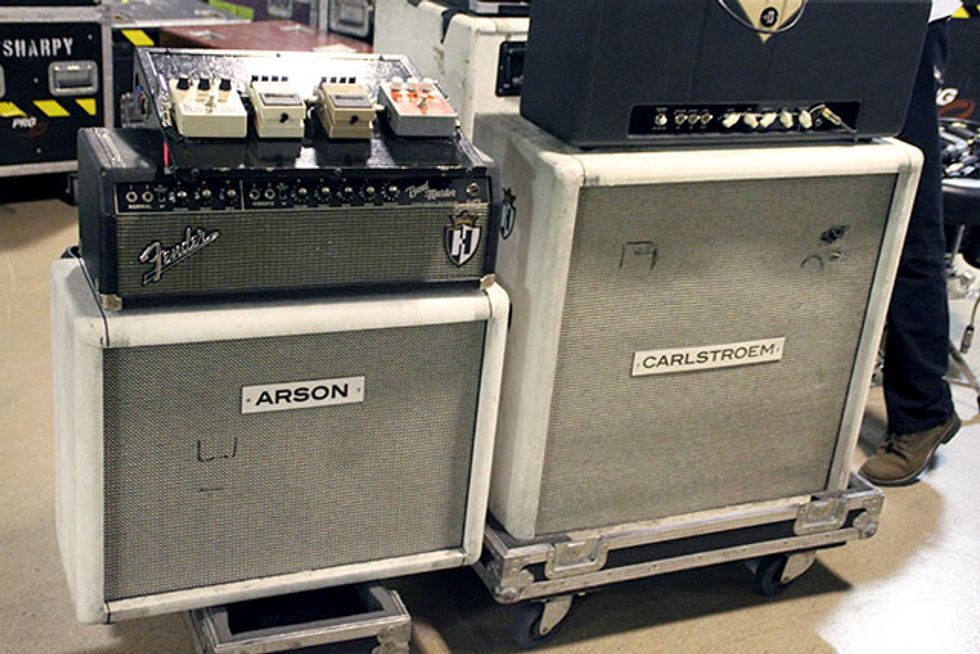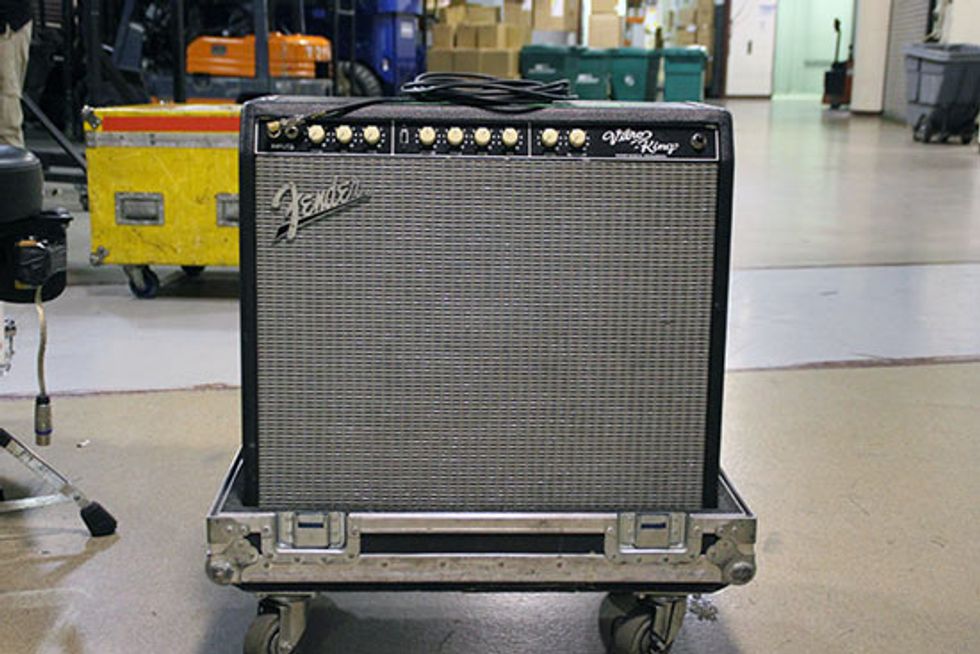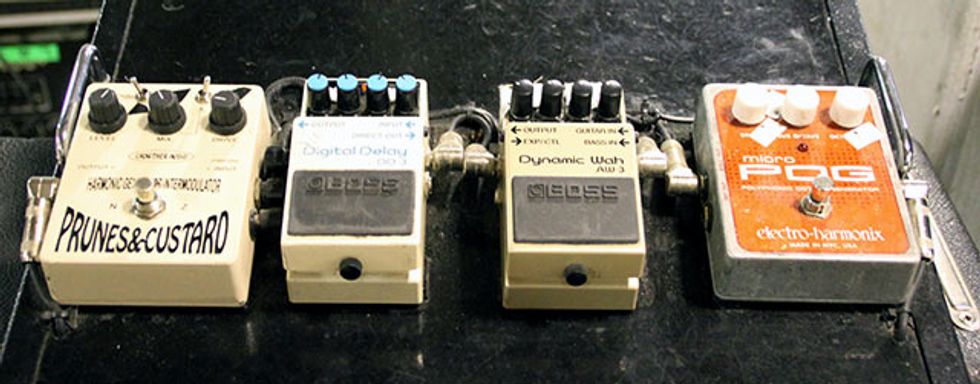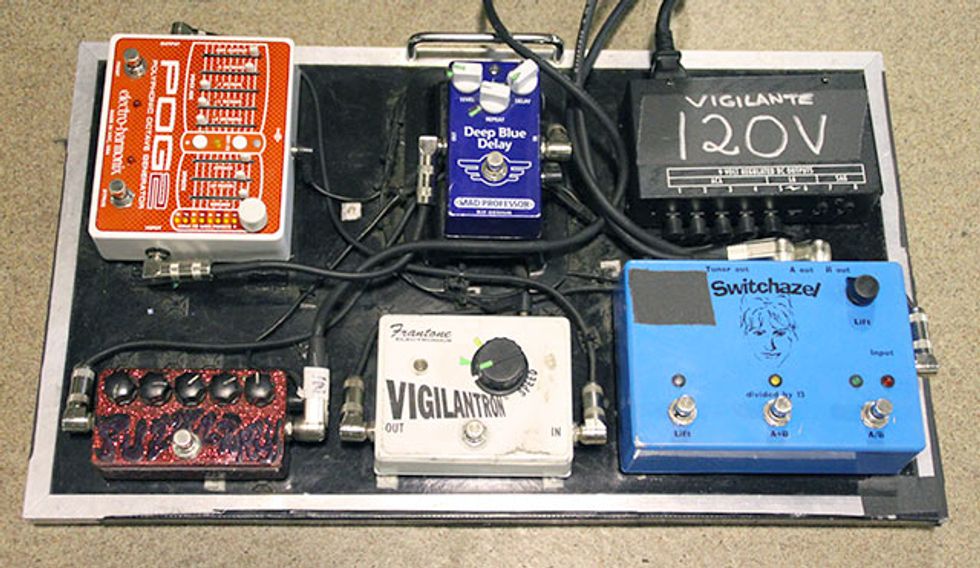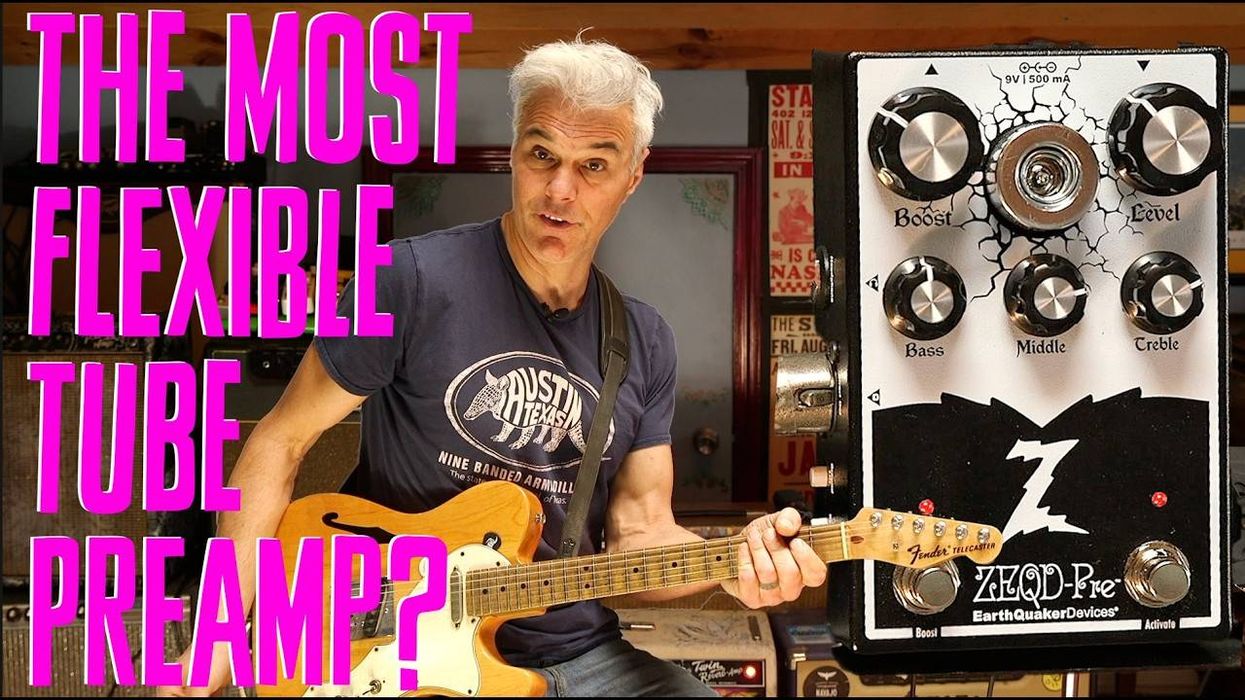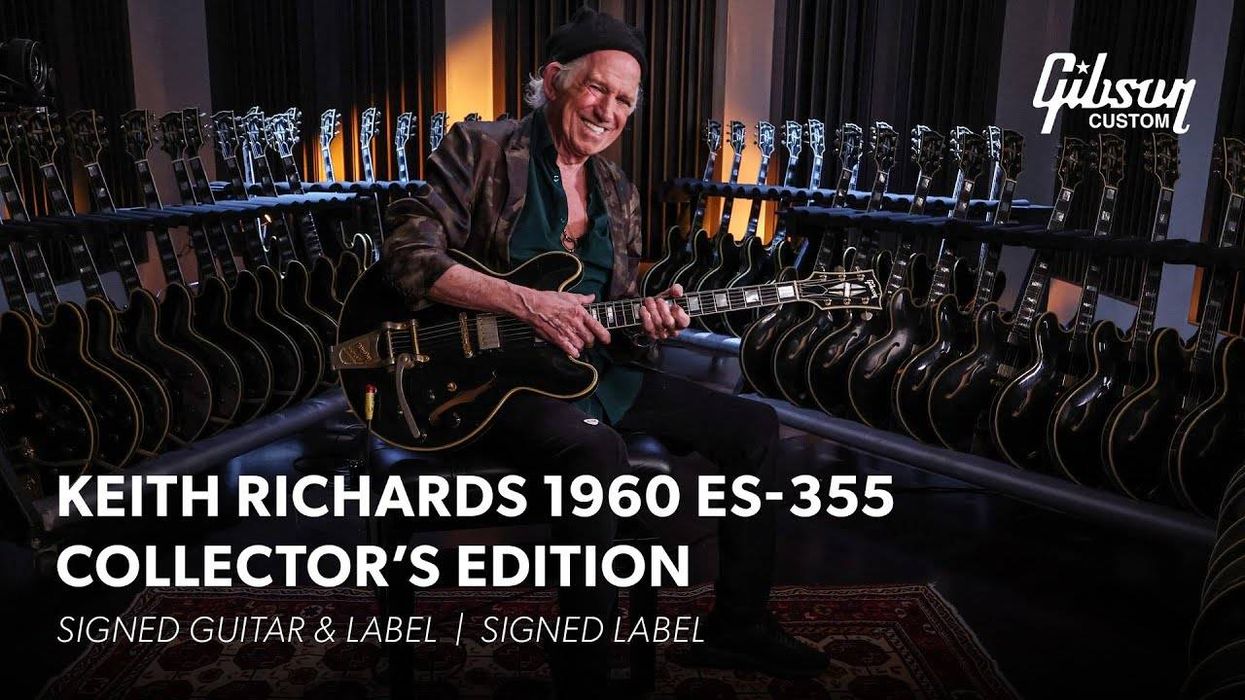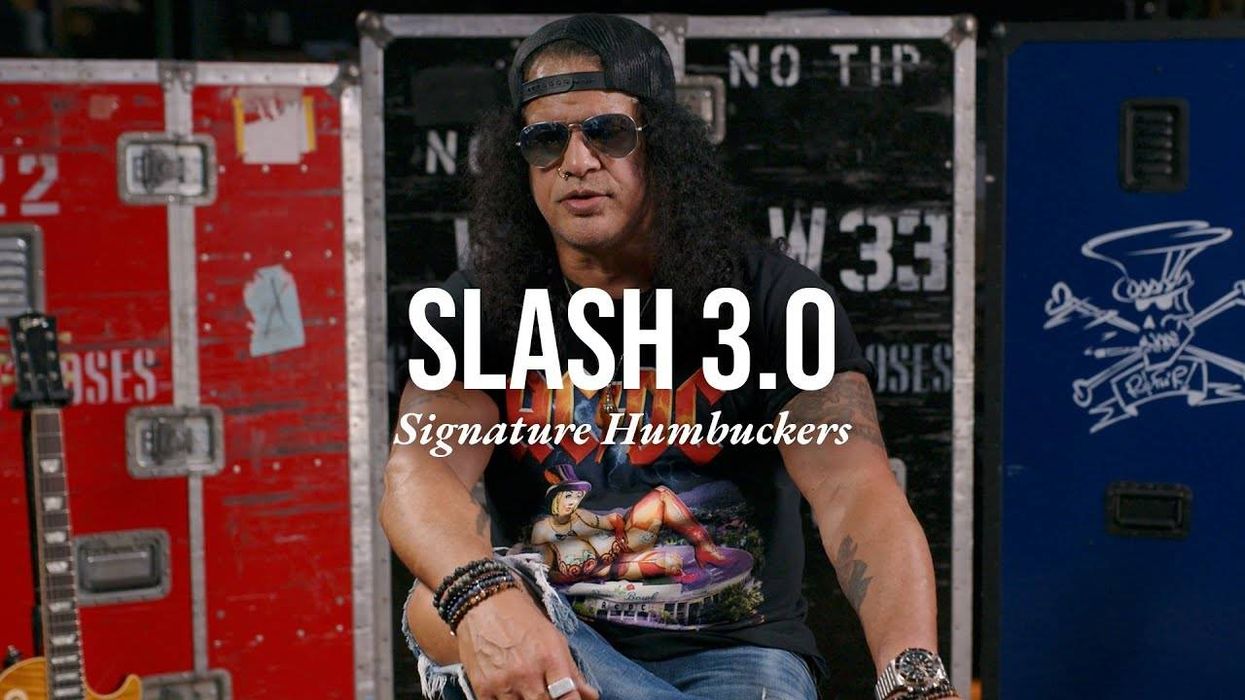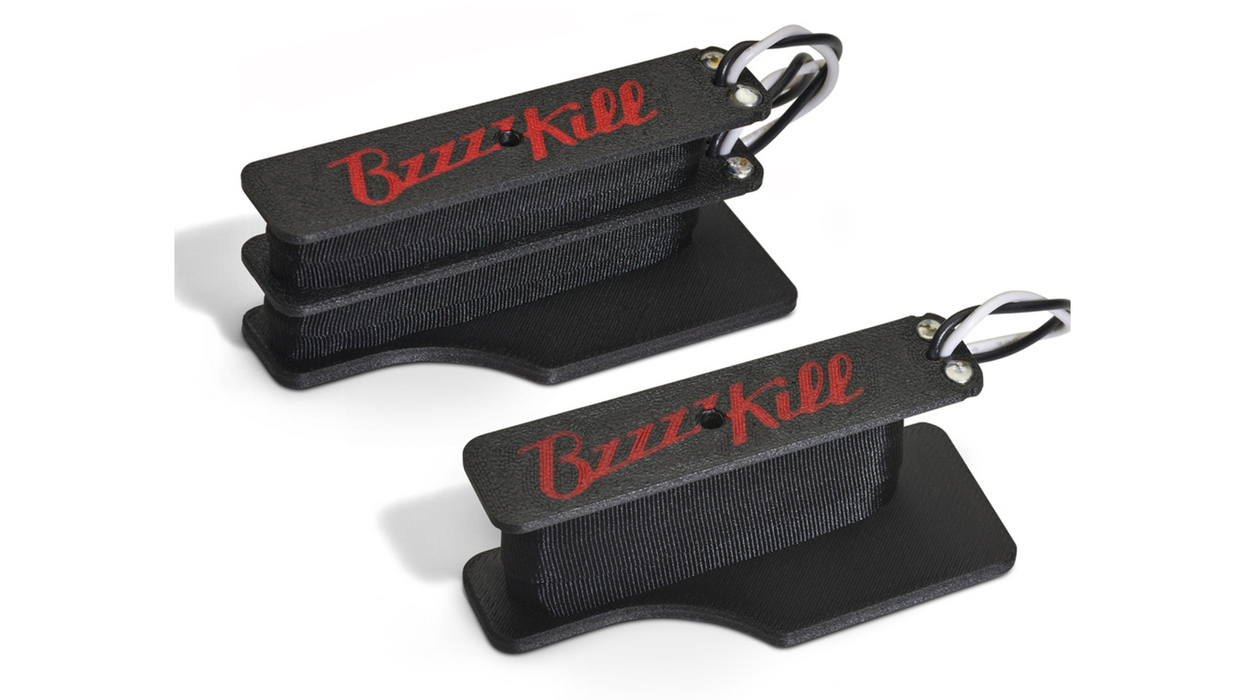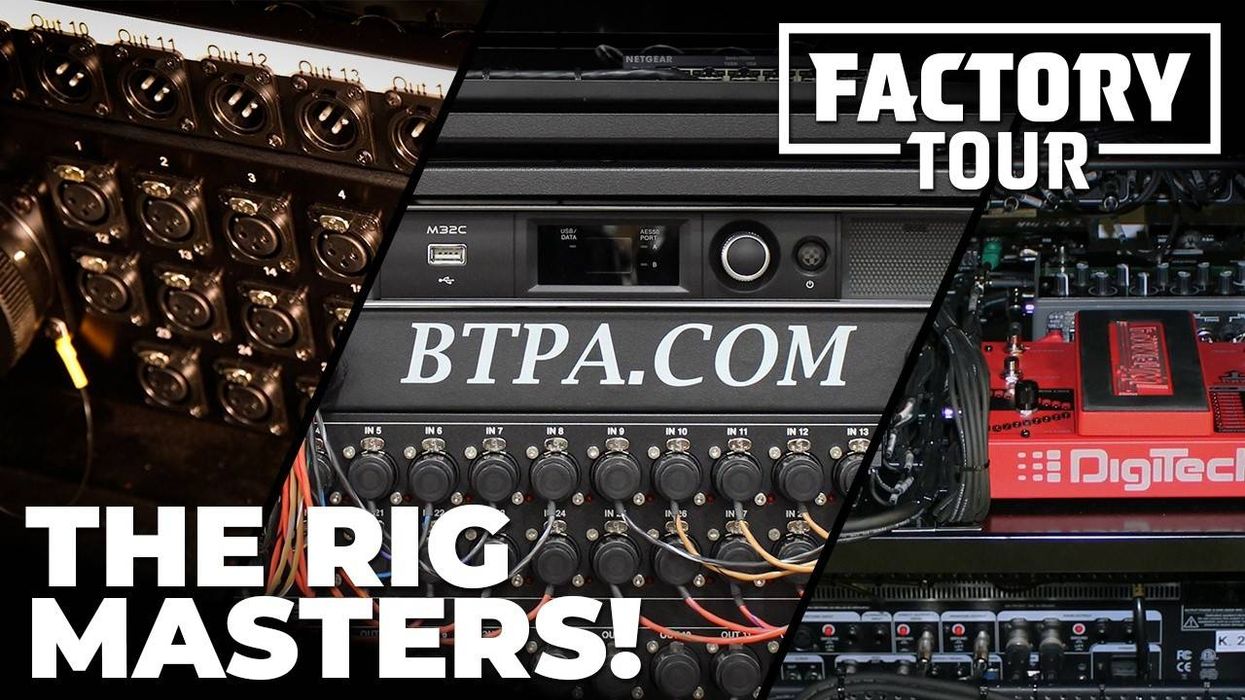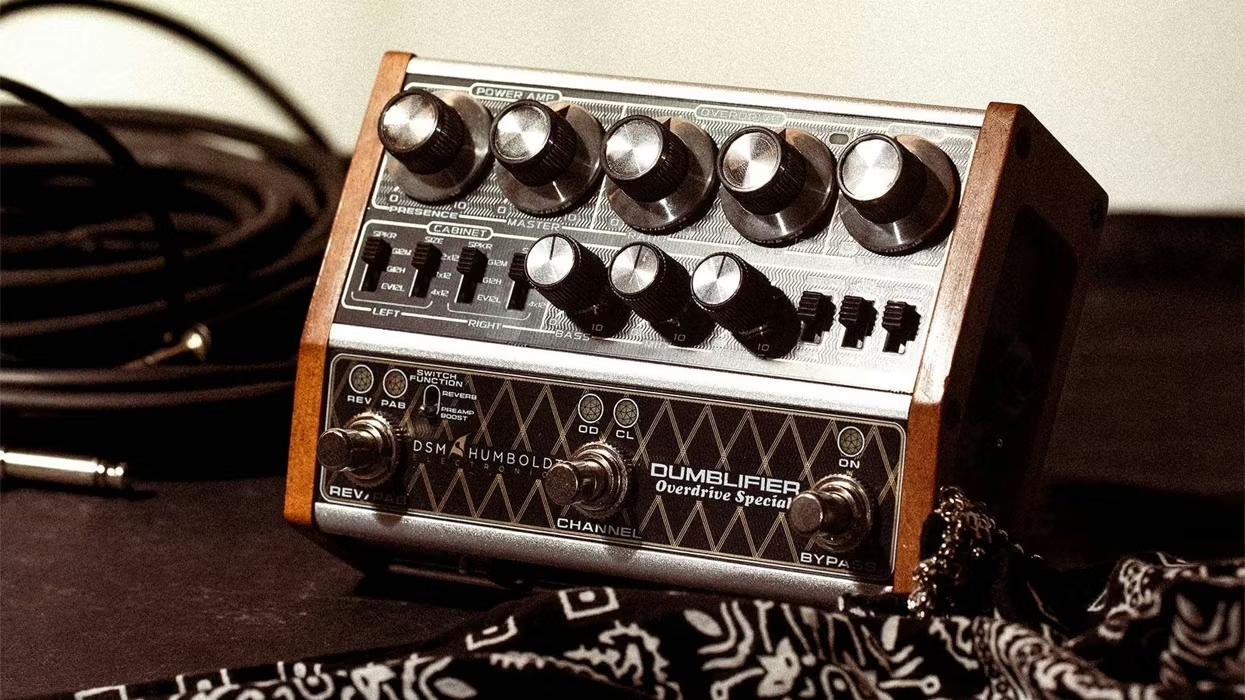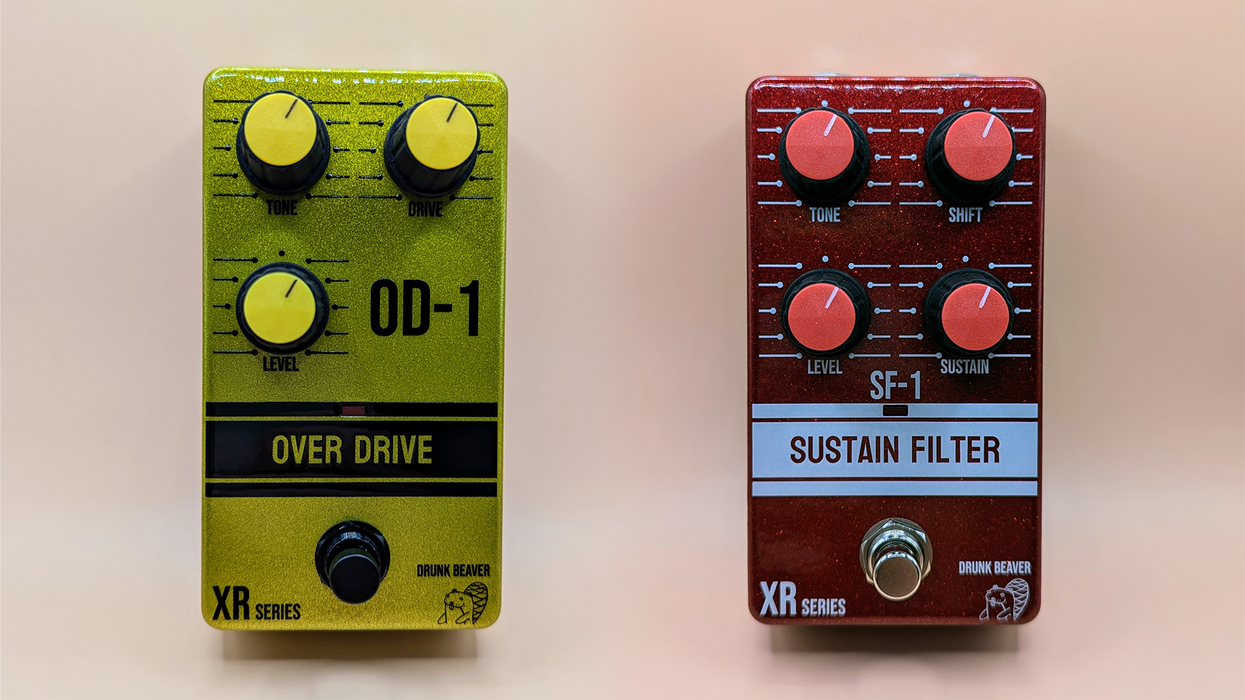Premier Guitar is on location in Chicago, Illinois, where Rebecca Dirks meets up with Nicholaus Arson and Vigilante Carlstroem of the Hives. In this segment, the guys discuss their heavily battered go-to axes (and why it doesn?t really matter for garage rock anyways), along with their mix of boutique and vintage amps and effects.
Guitars
Nicholaus Arson's main guitar is a vintage Fender Telecaster Custom with a hot bridge pickup (he never uses neck pickups—there's not even a switch). While both guys have different rigs around the world, this is the guitar he travels with. His U.S. touring rig is rounded out with a newer custom Tele and a custom "Arsonette" with a Lace Sensor that's designed to be a cross between a Tele and a Firebird.
Vigilante Carlstroem's main guitar is a '59 Epiphone Coronet that he travels with and plays at all of his shows. It's stock, other than a replaced jack, and all of the wear was done by him. For his U.S. rig he also has a '90s Gibson Flying V with Lollar pickups that's been broken in half and beat up. He uses it for songs that require the neck pickup sound.
Amps
Arson uses a Fender Bandmaster and '76 Fender Vibrolux, both on all the time, through a vintage Hiwatt cab with Celestion Heritage Greenback speakers.
Carlstroem uses Divided by 13 amps in all of his backlines around the world. He usually uses the FTR 37, but was using a JJN 50/100 for the arena shows on this tour. The amps go through a vintage 4x12 cab with Celestion Heritage Greenback speakers. All of the amps' controls and circuitry are shielded with foil because the amps and the Epiphone are sensitive to interference. He also uses a Fender Vibro-King for a cleaner sound, in conjunction with the Divided by 13 head.
Effects
Arson's board is very simple—he usually just plays straight into his amps. He incorporates a Crowther Audio Prunes & Custard fuzz for songs like "Tick Tick Boom," Boss DD-3 Digital Delay for slapback echo on "Take Back the Toys" and "Bigger Hole to Fill," Boss AW-3 Dynamic Wah used for the intro to "Hate to Say I Told You So," and a Electro-Harmonix Micro POG for a cover of The Jets' "Yeah," which is no longer in their setlist.
Carlstroem's board has a Divided by 13 Switchazel used as a boost, custom Frantone Vigilantron tremolo, Z.Vex Fuzz Factory (his favorite pedal), Mad Professor Deep Blue Delay usually set to slapback, and Electro-Harmonix POG2 used for an octave down or to make noise like imitating the saxophone on "Go Right Ahead" or organ on "My Time is Coming."



